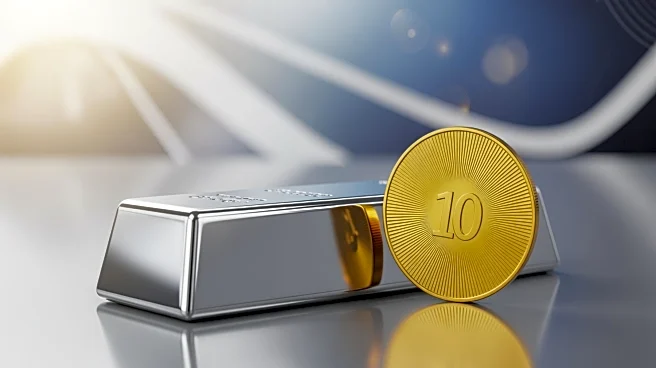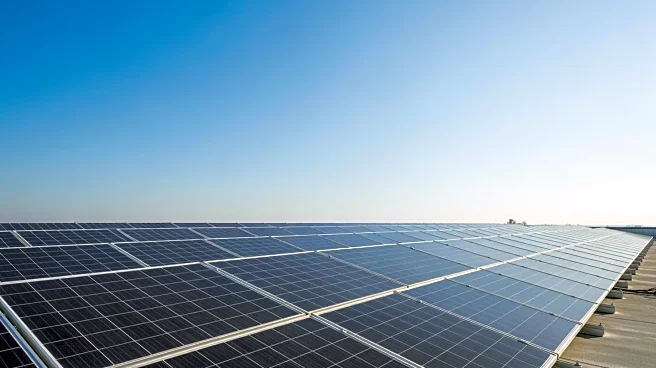What's Happening?
Major developed economies are increasingly operating under fiscal dominance, where large and persistent deficits shape monetary policy. This shift has accelerated the structural reallocation away from
fiat-based assets. Gold and silver reached new all-time highs in October, reflecting a broadening 'debasement trade' as investors rotate toward hard assets to preserve purchasing power and hedge systemic and geopolitical risks. Silver's liquidity-driven squeeze and subsequent consolidation underscore structural tightness in physical supply, suggesting a higher long-term price floor and continued upside potential amid growing industrial and strategic demand. The debasement trade reflects a structural regime in which fiat currencies gradually lose purchasing power as persistent fiscal deficits, debt monetization, and ongoing liquidity injections erode real value over time.
Why It's Important?
The expansion of fiscal deficits is global in scope and affects all major currency blocs. As a result, the bid for gold is also global and not solely a U.S. or U.S. dollar phenomenon. Investor demand for gold and other hard assets has risen sharply over the past two months, but this shift reflects a trend that has been developing for much longer. The debasement trade is not new—it is the latest phase of a structural reallocation toward stores of value that are less exposed to fiscal and monetary dilution. This shift toward fiscally driven monetary expansion has prompted more investors to allocate to hard assets that cannot be easily diluted by government policy.
What's Next?
The forces driving deficits and currency debasement are structural rather than cyclical. Without a significant reset—such as an inflationary period followed by coordinated fiscal reform—the current trend is likely to persist. U.S. policy is effectively calibrated to 'run it hot' in an effort to grow nominal GDP faster than the debt burden, implying continued fiscal and monetary friction ahead. From this perspective, the debasement trade is still in the early stages of a longer structural cycle.
Beyond the Headlines
Silver has been added to the U.S. Geological Survey's list of critical minerals for the first time, elevating its role beyond a precious metal to a strategic industrial resource. Silver's irreplaceable use in solar panels, electric vehicles, semiconductors, batteries, and medical technologies ensures durable long-term demand and reinforces its strategic importance in the energy transition and advanced manufacturing. U.S. policy is likely to evolve toward strategic stockpiling for defense, energy, and technology applications, introducing an additional structural layer of demand beyond investment flows.











